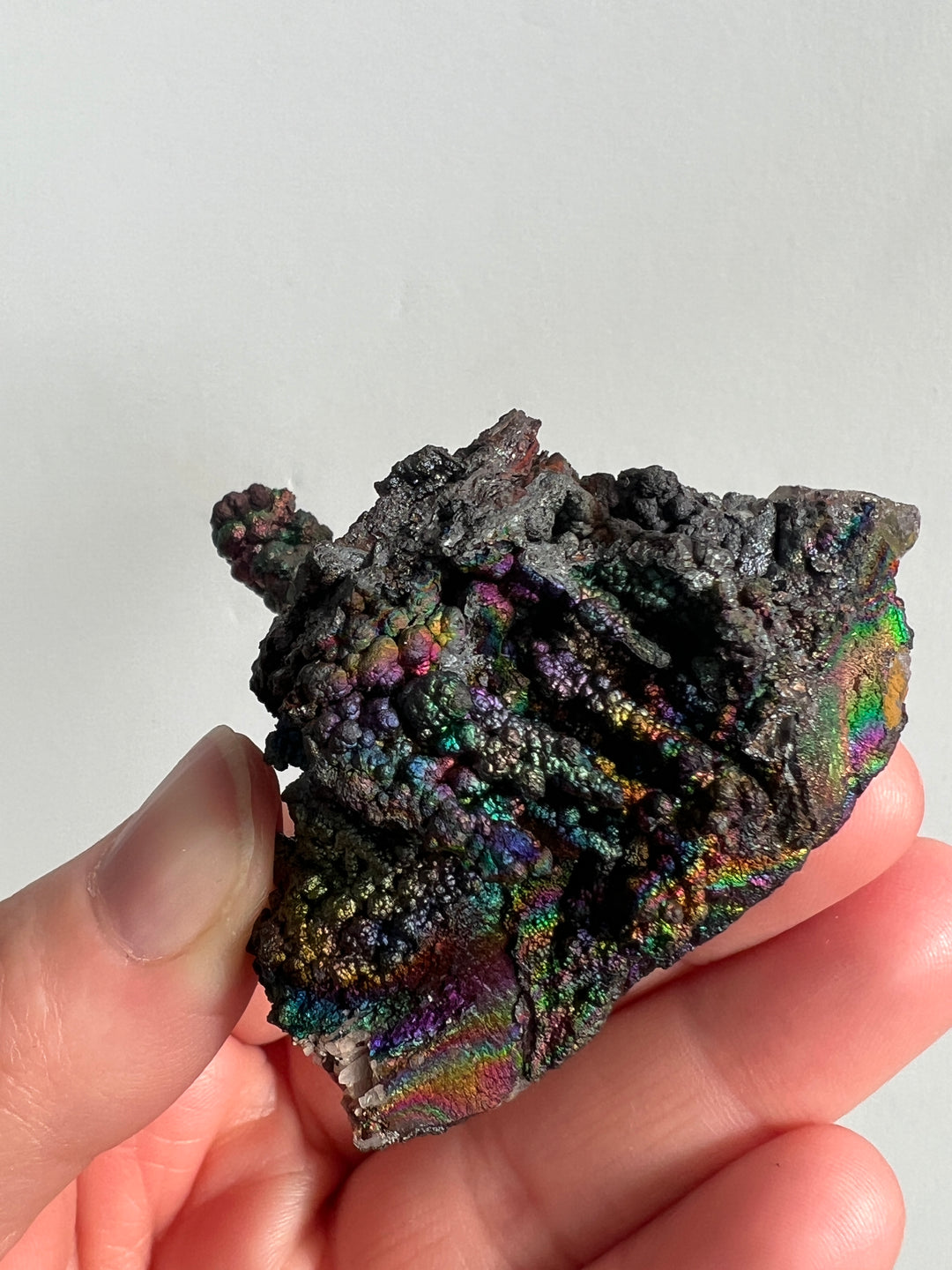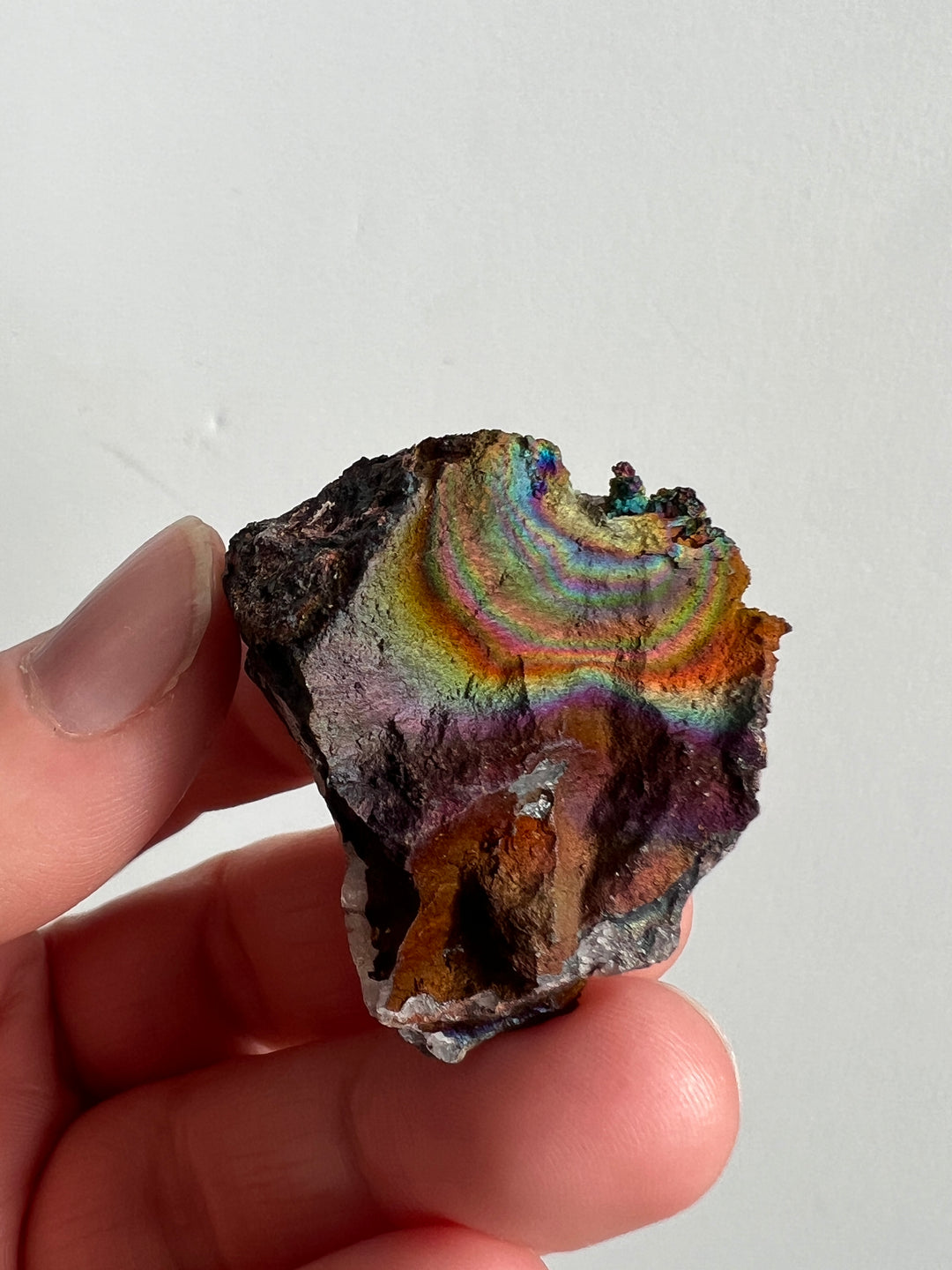History, Location & Origin | Turgite
Turgite, often considered a variety or mixture of two iron oxide minerals, Hematite and Goethite, is known for its striking iridescent colors. While not as extensively documented or historically significant as some other minerals, Turgite's appeal lies in its unique visual properties.
Formation and Composition:
- Mineral Composition: Turgite is not recognized as a distinct mineral species but is commonly referred to in the mineral trade. It is a mix of Hematite (iron oxide) and Goethite (hydrated iron oxide), which contributes to its characteristic iridescence.
- Iridescent Quality: The iridescence is due to the intergrowth of Hematite and Goethite layers, which diffract light to produce various colors.
Geographical Locations:
- Occurrence: Turgite can be found in iron-rich environments, typically in areas where Hematite and Goethite are present. These include various mining regions known for iron ore deposits.
Historical Context:
- Industrial Use: While Turgite itself doesn't have a specific historical use, both Hematite and Goethite have been utilized throughout history. Hematite was used by ancient cultures for pigments and jewelry, and Goethite has been used as an ore of iron.
- Contemporary Recognition: In the modern mineral trade and among collectors, Turgite is appreciated for its aesthetic appeal rather than historical significance.
Modern Significance:
- Collectors and Enthusiasts: Turgite is sought after by mineral collectors due to its unique and vibrant iridescence.
- Artistic and Decorative Use: Its striking appearance makes it popular for use in jewelry, decorative pieces, and various artistic applications.
In summary, Turgite's significance primarily lies in its aesthetic appeal and the unique interplay of minerals that gives rise to its iridescent quality. While it may not have a rich historical background, its visual properties make it a fascinating subject for collectors and enthusiasts in the field of mineralogy.







